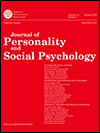Background
Openness on one’s health condition or (stigmatized) identity generally improves mental health. Intersex or differences of sex development (DSD) conditions have long been kept concealed and high levels of (internalizing) mental health problems are reported. This study examines the effects of condition openness on anxiety and depression and the role of mediating concepts in this population.
Methods
Cross-sectional data of individuals of 16 years and older with an intersex/DSD condition was collected in 14 specialized European clinics as part of the dsd-LIFE study. Patient-reported measures were taken on openness and shame (Coping with DSD), self-esteem (Rosenberg Self-Esteem Scale), satisfaction with care (CSQ4), anxiety and depression (HADS). Scores were compared per clinical group and data were analyzed via structural equation modeling (SEM) to calculate prediction and mediation models.
Results
Data of 903 individuals were included in this study (Turner syndrome (n = 284), 46, XY DSD (n = 233), CAH (n = 206) and Klinefelter syndrome (n = 180)). Participants were moderately open on their condition. High levels of both anxiety and depression were observed across the sample. In SEM analysis, the tested models predicted 25% of openness, 31% of anxiety and 48% of depression. More condition openness directly predicted lower anxiety and depression symptoms, as well as indirectly through increased self-esteem, self-satisfaction and satisfaction with social support.
Conclusions
Condition openness is associated with lower anxiety and depression in individuals with an intersex/DSD condition. Healthcare may provide the necessary knowledge and skills to employ one’s optimal level of self-disclosure in order to improve mental health.



